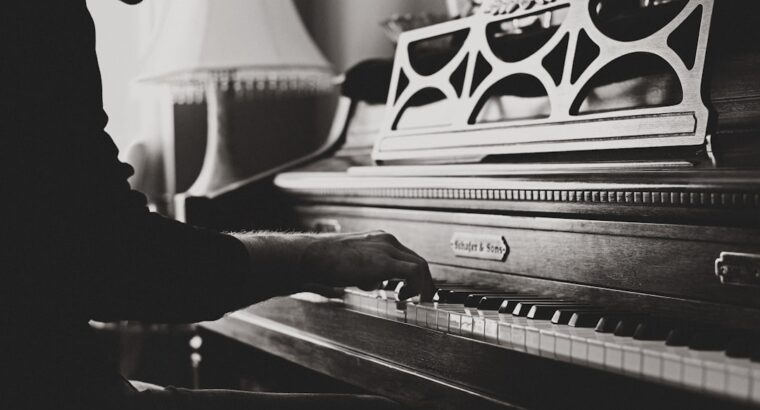How to Test a Piano Before Buying: A Beginner’s Checklist
How to Test a Piano Before Buying: A Beginner’s Checklist
Introduction
Stepping into the world of pianos as a beginner can be as exciting as it is daunting, especially when it comes to purchasing your first instrument. A piano is not just a beautiful piece of furniture; it’s an investment in your musical journey. However, like any significant purchase, it requires careful consideration and testing to ensure you’re getting a quality instrument that suits your needs. Whether you’re dreaming of grand concerts or cozy evenings filled with music, finding the right piano is crucial. This guide will provide you with a detailed checklist of what to look out for, how to test pianos effectively, and tips to make an informed decision, ensuring your first piano is perfect for your musical aspirations.
Importance of Testing a Piano Before Buying
 Image courtesy: Unsplash
Image courtesy: Unsplash
Testing a piano before purchasing is crucial, especially for beginners who are making their first foray into the world of music. This pre-purchase examination not only ensures you get a high-quality instrument but also saves you from future disappointment and unnecessary repair costs.
Ensures quality and functionality
Examining a piano thoroughly before buying helps verify its quality and functionality. By testing the piano, you can identify any issues related to sound, key responsiveness, and mechanical integrity. This step is essential because it affects the playability and the learner’s ability to progress in their musical journey.
Helps in making an informed decision
A hands-on test allows you to compare different models and brands and understand which piano suits your personal preferences in terms of touch, tone, and overall feel. This knowledge is invaluable as it helps you make an informed decision based on your specific learning needs and budget constraints.
Beginner’s Checklist for Testing a Piano
When visiting a showroom or checking out a second-hand piano, use this checklist to guide your inspection:
Check for physical condition
• Examine the piano’s exterior for any visible damage like cracks, scratches, or dents.
• Check the soundboard located at the back of the piano for any signs of cracks or warping, as these can affect sound quality.
• Ensure the piano’s lid opens and closes smoothly without any hindrance.
Assess sound quality
• Play each key to listen for consistency in sound across all notes. There should be no buzzing, rattling, or muted sounds.
• Pay attention to the piano’s tone. It should be rich and full, not harsh or overly bright unless that’s the specific tone you desire.
• Check the sustain pedal and listen to how long the notes linger when the pedal is pressed.
Example keys and pedals
• Test every key to ensure they all produce sound when pressed and that they return to their original position immediately after being released.
• Play chords and scales to check for any stickiness or sluggishness in the key action.
• Examine the pedals. The sustain pedal is the most commonly used pedal, and it should hold the note without any squeaking or resistance. Also, if present, test the soft pedal and the sostenuto pedal to ensure their functionality.
This beginner’s checklist will help ensure you choose a piano that meets your needs and provides a satisfying musical experience. Remember, taking the time to properly test a piano can lead to years of musical enjoyment.
Tips for First-Time Piano Buyers
 Image courtesy: Unsplash
Image courtesy: Unsplash
Seek guidance from experienced pianists
When venturing into the world of pianos, tapping into the experience of seasoned pianists can be incredibly valuable. These individuals can offer insights into the best brands, the ideal piano types for beginners, and the nuances of piano maintenance. They may also recommend reputable stores or sellers. Don’t hesitate to ask for advice on which models are the most beginner-friendly and what to look out for when testing different pianos.
Consider hiring a piano technician
For a more technical evaluation, think about hiring a professional piano technician. These experts can examine the piano for any internal issues that might not be noticeable at first glance. They’ll check the soundboard, the strings, and the action mechanism, ensuring everything is functioning as it should. This might incur an additional cost, but it could save you from major expenses due to unforeseen repairs in the future.
Set a budget and stick to it
Setting a clear budget before you start shopping is crucial. Pianos come in a wide range of prices, and it’s easy to get carried away. Determine how much you are willing to spend and consider all related costs such as delivery, tuning, and potential repairs. Stick to your budget to avoid financial strain. Always remember that while high prices often correlate with high quality, there are many excellent models available that won’t break the bank.
Conclusion
Purchasing a piano is a significant decision, especially for beginners who are just embarking on their musical journeys. Therefore, it’s crucial to take your time and use the checklist provided to ensure that the instrument you choose not only fits your current needs but also supports your growth as a musician. Test the tone, touch, and overall condition of the piano, and consider factors like size and budget. With these guidelines, you’ll be well-equipped to select a piano that resonates with your artistic aspirations and serves as a lasting companion on your musical path.

